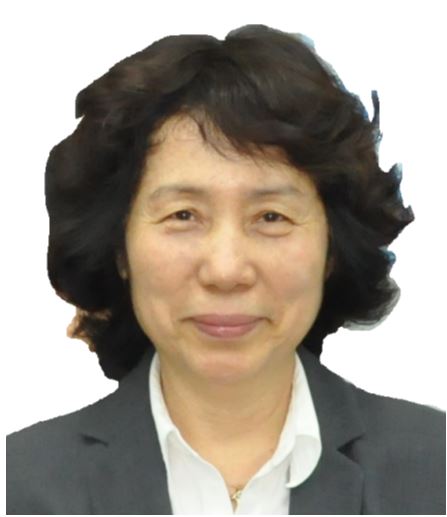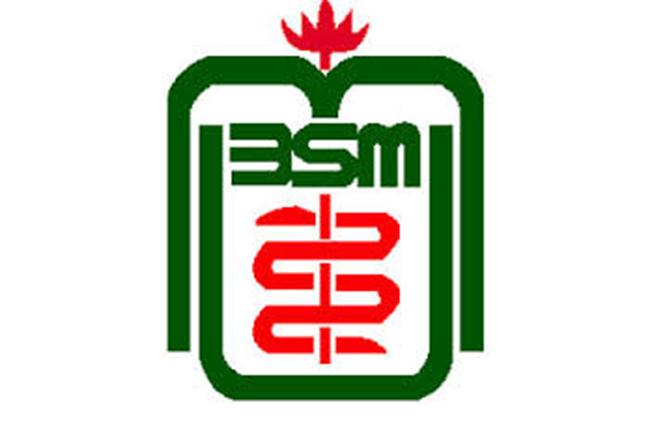Day 1 :

Biography:
Kengo Torii received his D.D.S. degree from Nippon Dental University, Tokyo, Japan in 1969 and his Ph.D. from the same university in 1973. He had been a lecturer
of the same university from 1973 to 1992. He is currently a visiting professor at the same university. He is a representative of Japan Prosthodontic Society.
Abstract:
Occlusal disease is a disease caused by a discrepancy between habitual occlusal position and muscular position. Th e
muscular position is defi ned as the mandibular position when it has been closed by voluntary muscular activity with an
upright posture. Th e habitual occlusal position is an arbitrary (habitually) closed position. Generally, the muscular position
on is coincident with the habitual occlusal position. However, in an appreciable number, it is not. And in these people, various
symptoms would be manifested. To remove a patient’s occlusal habit and obtain a physiological muscular position, the bite
plate-induced occlusal position is used during voluntary jaw closing, while in an upright position and aft er wearing an anterior
bite plate for a short period of time. Th e discrepancy between the habitual occlusal position and the muscular position is related
to some symptom using the bite plate-induced position. Th e symptoms include oral dyskinesia, glossodynia, burning mouth
syndrome, tension-type headache, tinnitus, otitis, vertigo, and coxalgia etc.. Some of these symptoms will be presented and
discussed.

Biography:
Kasumi Baruch graduated from Nippon Dental University in Tokyo, Japan. She has earned her Ph.D. in pharmacology from Tokai University Medical School and
CAGS in Periodontology from Boston University dental school, where she was the director of postgraduate applied pharmacology and clinical assistant professor
in periodontology. Presently, she works as a professor in Periodontology at Imam Abdulrahman Alfaisal University, Saudi Arabia. She gives talks and seminars
especially in microsurgery internationally. She is an active member of the AAP and a diplomat of American Board of Periodontology. Outside of dentistry, she is a
classical concert pianist and performs all over the world.
Abstract:
It has been recognized that the closed attention on periodontal tissue must be given before, during and aft er the orthodontic
treatment. One example would be Altered Passive Eruption (APE). APE is a distinguished clinical situation characterized by
excessive gingival tissue covering beyond the enamel limits, appearing as a short clinical crown, which gives the impression
of hidden teeth. APE oft en contributes to the appearance of a gummy smile or gingival smile and it is a well-known challenge
in patients who require the aesthetic considerations in their treatment. Regardless of suffi cient oral hygiene skill, patients
with APE have a limitation to clean the entire crown surface, thus oft en experience discomfort in the gingival margin due
to a chronic infl ammation. It can be corrected with ease of periodontal surgery. Nevertheless, it is essential to make a correct
diff erential diagnosis and optimal treatment plan (Francisco Alpiste-Illueca 2011). It is reasonable to assess that there is a prone
infl ammatory response in the gingiva of the APE site. If the patients have a breach of the protective barrier i.e. the physiological
abnormality, this can trigger a pro-infl ammatory reaction via the introduction of bacteria. In this lecture we will focus on
several clinical cases associated with orthodontic treatment and analyze the area of interests in periodontology.

Biography:
Mahmood Qureshi, Founder President, Pakistan Academy of Implant Dentistry & Pakistan Academy of Facial Aesthetics, Director, MQI- the International Institute
of Implant & Reconstructive Surgery; MQ is one of the acknowledged international mentors and a leading dental implant & oral reconstructive surgery expert. He
has developed and modifi ed several surgical techniques and instruments and is the originator of the ‘2 IC' Universal Concept and 'SABIRIN'- a unique philosophy of
treating the untreatable patients. He has developed MQMET - a revolutionary and an innovative implant placement system. Founder of the "1 year" post graduate
curricula in implantology; Editor of the International Journal of "IMPLANTS"; An international course presenter; has lectured extensively & conducted over 1000
professional presentations on implantology in 5 continents.
Abstract:
In reality, most of the patients seeking implant treatment with existing edentulous areas either do not have adequate bone to
permit implants to be placed or to have them placed into normal root locations. Th is may lead to no treatment at all, limited
number of implants, complicated prosthesis, inadequate occlusion, unnecessary over treatment, excessive costs poor esthetics /
oral hygiene. Th is atrophy is a dynamic, functional loss as the bone heals and changes from stress bearing to non-stress bearing
bone. For successful implant placement the goal should be to recreate bone in the same positions. In pursuance of perfection
and a comprehensive solution the course conductor will present a unique philosophy, emphasizing on treating the untreatable
cases; and will present to you the simplest ways to achieve these goals.

Biography:
Attila Kaman has completed his degree at University of Medical Sciences Medical and Dental faculty named after Semmelweiss, and postdoctoral studies, MSc- Master of Science of Implantology at University Munster, Germany. He is the chief surgeon of the Implantcenter Dental and Maxillofacial Clinic in Budapest. He is
leading and maintaining 6 clinics in 4 countries (London, Geneve, Bern, Zurich/ Kloten, Budapest, Dublin). He is the chairman of association of Leading Hungarian
Dental Clinics.
Abstract:
Objective: Th e purpose of this lecture is to examine the incidence rate of early and late failure of dental implants and associated
prosthetic problems with reference to a total number of 28,000 implants placed between 1992-2018 in patients requiring
partial and full-arch rehabilitation. We have compared the nowadays popular and cost-eff ective all-on-4 all-on-6 rehabilitation
solution with 8-10 implants placed in the maxilla, and 6-8 in the mandible.
Results: Following the adaptation of various dental implant systems, our retrospective study shows that the rate of late implant
failure and the associated prosthetic problems were lower in case of increased number of implants. We suggest that the result
is due to the balanced distribution of the functional load on the implant and bone, the improved stress distribution against the
opening force of the mandible and the overload of posterior implants.
Conclusion: Th e benefi ts of the all-on-4 and all-on-6 rehabilitation solution include that (the sometimes risky) bone graft ing
in the posterior mandible can be avoided, furthermore, the increased inter implant distance ensures improved blood supply.
However, excessive overloading of the implants may lead to screw fracture, prosthetic fracture and bone loss. In case of
unexpected complications, the increased number of patient visits make the cost-eff ective all-on-4, all-on-6 treatment concept
a subject to controversy. When comparing the risks and complications of the all-on-4, all-on-6 rehabilitation solution with
posterior mandibular bone graft ing procedures, we can fi nd similar results.
- Pediatric Dentistry
Location: University Hall

Chair
Kengo Torii
Nippon Dental University, Japan

Co-Chair
Kasumi Barouch
Imam Abdulrahman Alfaisal University, Saudi Arabia
Session Introduction
Jiin-Huey Chern Lin
National Cheng-Kung University, Taiwan
Title: Material properties and clinical performance of a fully resorbable, fast healingstimulating calcium-based bone substitute

Biography:
Professor Jiin-Huey Chern Lin received her Ph.D. from Northwestern University Dept. of Biological Materials (Chicago, Illinois). She is Director of Center for Biomaterials Research, National Cheng-Kung University (Tainan, Taiwan) and Technology Founder/CTO of Joy Medical Devices Corp. (Luzhu, Kaohsiung). Professor Chern Lin has published 100+ SCI papers along with 60+ US patents and 90+ non-US patents
Abstract:
A series of synthetic, inorganic, highly osteoconductive and fully resorbable calcium-based bone substitute materials (Ezechbone®) has been developed by a joint research project of National Cheng-Kung University and Joy Medical Devices Corporation of Taiwan. Reported in this presentation include non-clinical performance and clinical follow-ups for different applications. Ezechbone®Granule is a highly porous granular product characterized by its high resorption rate (totally resorbed and replaced by new bone in 3-6 months), while Ezechbone®Cement is featured by its unique non-dispersive behavior when contacting blood/body fluid without the need of any polymeric or other binder additive. This cement can be applied directly after forming a paste or injected into bone void via a minimally invasive procedure. The safety and efficacy of these medical devices are confirmed by a series of chemical/physical characterization and biocompatibility tests such as cytotoxicity, sub-chronic toxicity, intracutaneous reactivity, skin sensitization, ocular irritation, endotoxin test, hemolysis test, genotoxicity and implantation. Animal models for implantation tests include SD rat femur body, New Zealand white rabbit femur condyle and mandible, Lanyu pig mandible, and osteoporotic goat spine. The histopathologic examination indicates that the implant is always intimately integrated with surrounding bone tissues. Majority of Ezechbone® Granule is readily resorbed and replaced by new bone generally in a one-to-one resorption manner as early as 4W post implantation. The early-stage new bone formation is far faster in Ezechbone® Granule group than in autologous group. Clinical case reports include sinus lift, ridge augmentation, frontal bone augmentation and treatment for various types of fractures.
- Dental health
Location: University Room A

Chair
Jiin-Huey Chern Lin
National Cheng-Kung University, Taiwan

Co-Chair
Aleksandar Gulin
University of Zagreb School of Dental Medicine, Croatia
Session Introduction
Jebun Nessa
BSM Medical University, Bangladesh
Title: Effect of tobacco and betel nut on periodontal health in diabetics

Biography:
Jebun Nessa is a founder chairman of Pedodontics Department, Faculty of Dentistry,BSM Medical University, Dhaka, Bangladesh. She passed BDS (Bachelor of Dental Surgery) in 1982 from Dhaka Dental College. In 1987 she got her DDS (Post Graduate Diploma in Dental Surgery) from the University of Dhaka and in 1992 she got her Post Graduate Diploma in Primary Health Care from the university of Western Australia and MPH from the university of Sydney, NSW, Australia. She is currently working as a professor and chairman of Department of Pedodontics at BSM Medical University, Shahbag, Dhaka-1000, Bangladesh.
Abstract:
A hospital-based cross sectional study was undertaken on diabetic patients aged between 19-79 years during the period of April 2004 – December 2004 in the department of Pedodontics (former Preventive and Children Dentistry), Bangabandhu Sheikh Mujib Medical University, Dhaka and at Diabetic Clinic at Rajshahi. This study was conducted to evaluate how tobacco and betel nut along with other study parameters affect periodontal health in diabetics in context of Bangladesh. The study population included 34 males and 47 females. Based on the study results, all study subjects brushed their teeth regularly and mostly with paste and brush. However, consistently the periodontal health in the middle sextants displayed better condition than the posterior sextants. From this view it can be presumed that in the middle sextants, pocket formation is not usually common maybe because the anterior region (middle sextant) is easy to clean and have more opportunity to catch extra exposure to oxygen in comparison to posterior sextants. The present study also showed an interesting and a controversial connection between periodontitis and tobacco and betel nut chewing among targeted diabetic patients. Though little is known about effects of tobacco and betel nut among diabetics, it is almost well established that tobacco and betel nut are harmful to oral health even for people without diabetes. However, a person with diabetes who use tobacco or chew betel nut or both is at much greater/higher risk for periodontal disease than a person who is non-diabetic. Even though this recent evidence supported the role of tobacco as a potent risk factor for the edentulous mouth or in the mouth where less than two or three teeth are present but this study gives a contrast result regarding periodontal health. Present study detected that gum bleeding is totally absent among both the betel nut chewers as well as tobacco users and also they are not insulin dependent whereas most participants of this study who are neither tobacco users nor betel nut chewers are insulin dependent. In this regard, data of the current study indicates that tobacco and betel nut might be potentially helpful to control blood sugar among diabetic cohort. It is perceived that the betel nut has an antibacterial property and so it can suppress the salivary organisms for prolonged betel nut users. In ancient period, for treating bleeding gums in Indian medicine betel nut is also used. In contrast, it might be possible that because of using tobacco blood circulation gum may be hampered that eventually results less or no gum bleeding. Therefore, it requires detecting the association between the higher periodontal index with the use of tobacco and betel nut chewing habits.
Since the sample size in this study was relatively small (81) and not representative, data have to be interpreted with care. Therefore, in order to validate these findings a longitudinal study could be a good option to elucidate this perception more concretely


